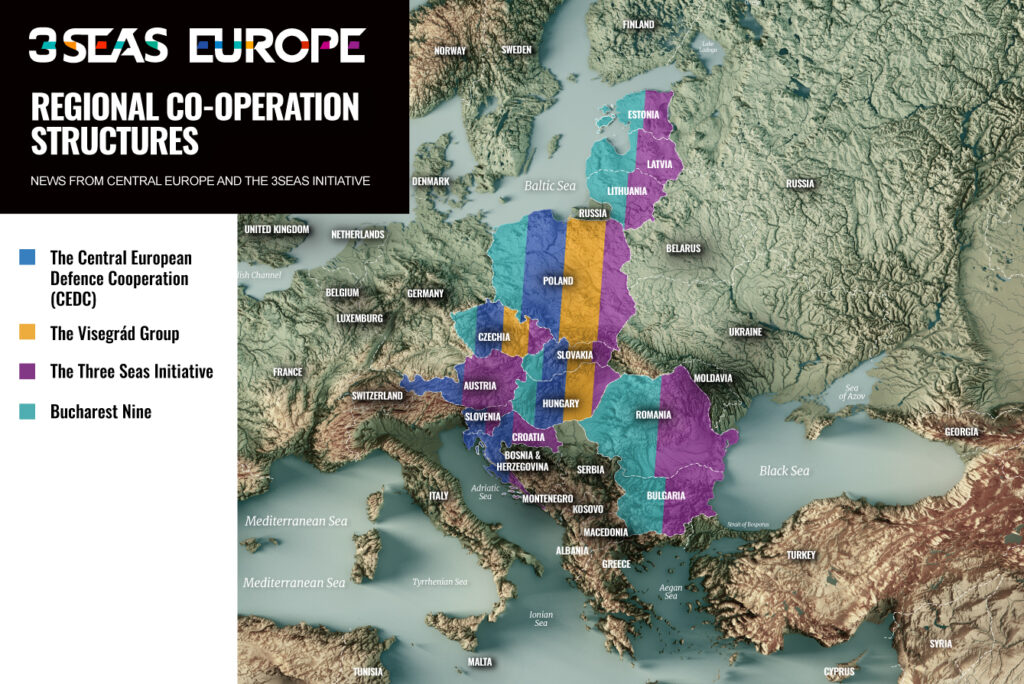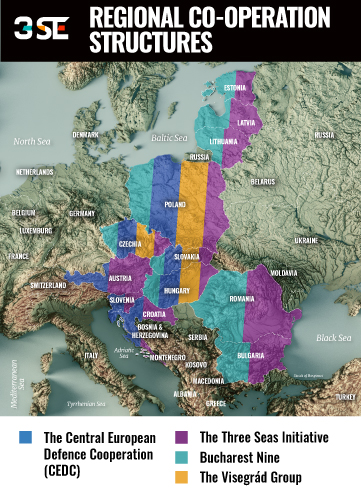Central Europe is not just a geographical term. It is also an idea, a political, social, and economic concept. The development of this concept has been in motion since at least the Middle Ages, but it has gained momentum and significance, especially in the last century, resulting in numerous geopolitical initiatives.
A strategic awakening
Several stages can be distinguished in the evolution of the concept of Central Europe. The very formulation of Central Europe as a political and cultural concept emerged in European consciousness at the end of the 19th century. As a result of historical processes at the end of the turbulent 20th century and the beginning of the 21st century, what can be called a “strategic awakening” of Central Europe took place. The turning point was, of course, the fall of the Iron Curtain, which unleashed the immeasurable potential of the region’s states, which had for so long been suppressed.
Central European geopolitical initiatives
One of the effects of this awakening has been a series of geopolitical initiatives undertaken by nations trying to find themselves in the new reality. These include:
The Central European Defence Cooperation (CEDC):
A military cooperation of the Central European states of Slovakia, Hungary, Austria, Slovenia, Croatia, and the Czech Republic, with Poland as an observer.
The Visegrád Group:
Also known as the Visegrád Four, V4, or the European Quartet, is a political and cultural alliance of four members of NATO and the European Union – the Czech Republic, Poland, Hungary, and Slovakia, formed to accelerate integration with the EU on military, political, economic, infrastructure and energy levels.
The Three Seas Initiative (3SI or TSI):
Also known as the Baltic, Adriatic, Black Sea (BABS) Initiative, or simply as the Three Seas. The Three Seas Initiative has been described as the most ambitious geopolitical project of our time, at least as far as this part of Europe is concerned. It is a project bringing together twelve European countries – Austria, Poland, Hungary, Lithuania, Latvia, Estonia, Bulgaria, the Czech Republic, Croatia, Slovakia, Romania, and Slovenia.
The three main objectives of the Three Seas Initiative were defined in Bucharest in a 2018 Declaration as boosting economic development, strengthening EU cohesion, and enriching transatlantic ties. The Three Seas Initiative is currently the most important and “hot” Initiative of the Central European countries, which will benefit the entire European Union. The common history, the shared experience of communism and stagnation behind the Iron Curtain of the countries forming the Initiative (except Austria), as well as cultural affinity favor the success of this project.
Bucharest Nine – B9, Formatul București
The B9 is similar to the Three Seas Initiative but within NATO. The agreement, initiated by the presidents of Poland and Romania, Andrzej Duda and Klaus Iohannis, brings together 9 countries that form NATO’s eastern flank. These are: Bulgaria, Czech Republic, Estonia, Hungary, Latvia, Lithuania, Poland, Romania and Slovakia.
The main objectives of B9 are ensuring the stability and security of the countries of Central and Eastern Europe, developing military cooperation between countries, strengthening the voice of the countries within the North Atlantic Alliance, and strengthening NATO’s eastern flank against Russia’s actions.









